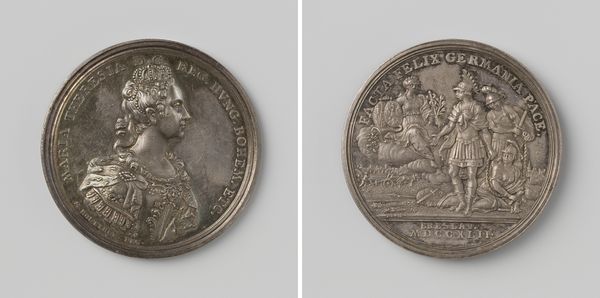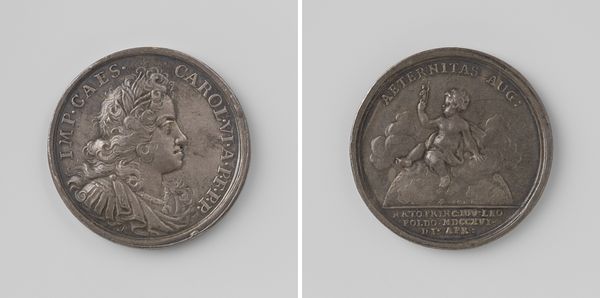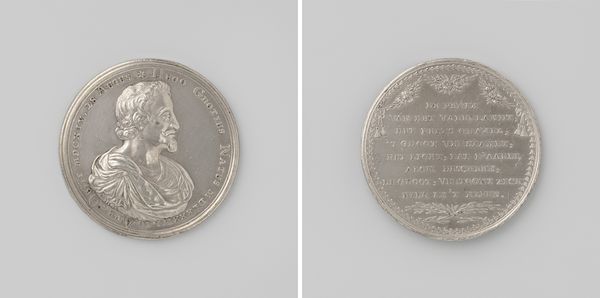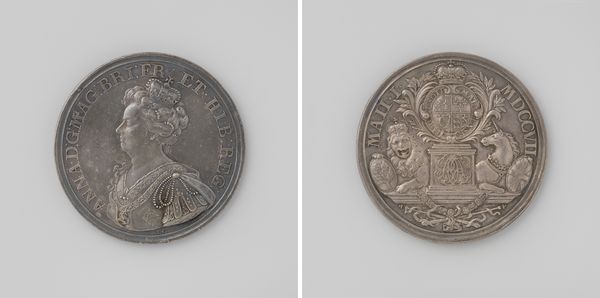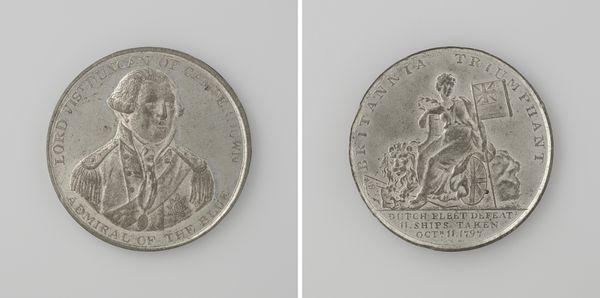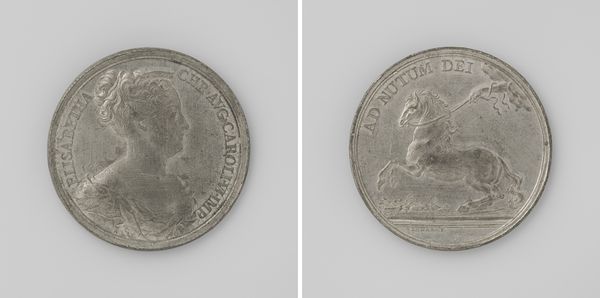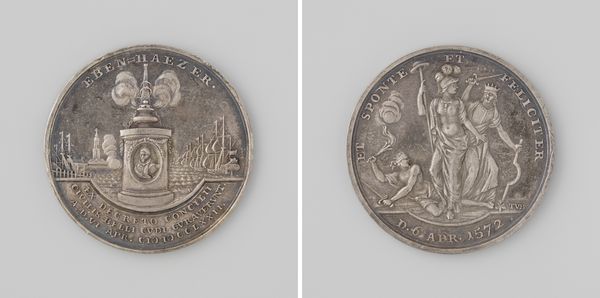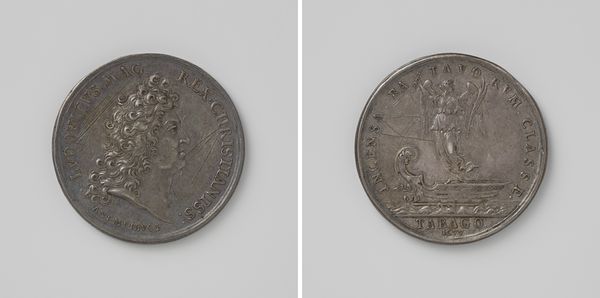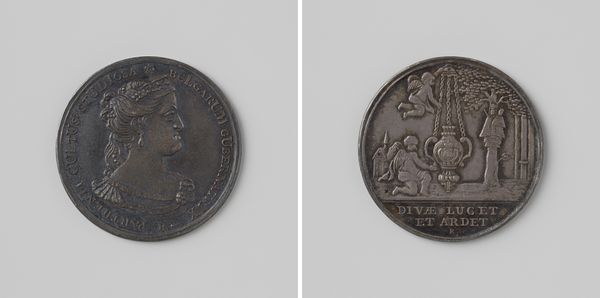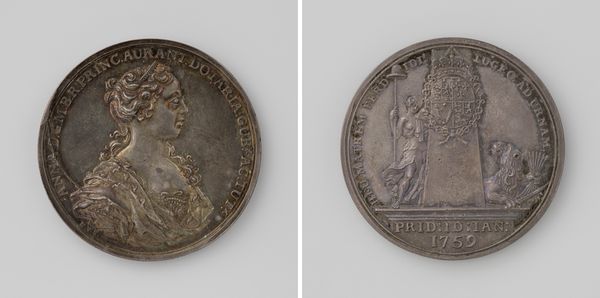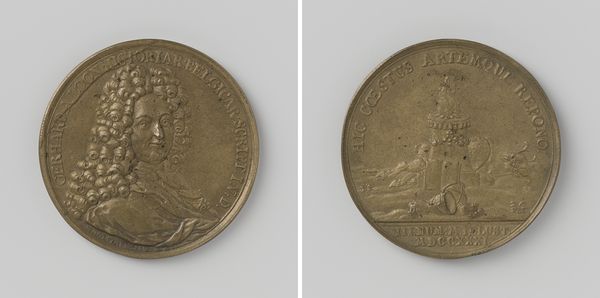
Overwinning bij Leipzig, ter ere van Karl Philip van Schwarzenberg, generaal van het leger der geallieerden 1813
0:00
0:00
print, metal, relief, bronze, sculpture, engraving
#
portrait
#
neoclacissism
# print
#
metal
#
relief
#
bronze
#
sculpture
#
history-painting
#
engraving
Dimensions: diameter 3.5 cm, weight 15.16 gr
Copyright: Rijks Museum: Open Domain
Curator: Here we have a medal from 1813 titled "Overwinning bij Leipzig, ter ere van Karl Philip van Schwarzenberg, generaal van het leger der geallieerden". Editor: My first impression? It’s stark. A small, cold tribute, especially given it’s celebrating a victory. Curator: These medals were often produced to commemorate significant events. Crafted from metal, possibly bronze, using engraving and relief techniques. These objects, sometimes seen as minor art, served a vital propagandistic role. Consider the labor involved—designing, engraving the die, striking the medal. What narratives were embedded in the production? Editor: Exactly. And what about the narrative being presented? Look closely. On one side, Schwarzenberg, a general. On the other, the battle. What’s included, and what's omitted? What about the experiences of soldiers, the civilians affected? This is about power, control. Who gets remembered and how? Curator: Neoclassical in style, wouldn't you say? That clear profile, the focus on a singular figure… Editor: Absolutely, reinforcing those ideals. That classicism connects directly with ideas of Empire, doesn't it? Whose empire are we talking about here? Look at the strategic function: a piece of material culture distributed for purposes beyond simple aesthetics, like solidifying a national narrative, defining the "heroic". It's power made palpable. Curator: Absolutely. By immortalizing him in a piece of metal, production and narrative function together to consolidate a particular kind of authority. A commemorative token. Editor: But commemoration for whom? By whom? Investigating the agency of those producing the material versus its effect. Curator: Thank you for offering that perspective. This discussion makes you consider the multiple forces involved. Editor: Indeed. History isn't set in stone; it's cast in metal, waiting to be reinterpreted.
Comments
No comments
Be the first to comment and join the conversation on the ultimate creative platform.

